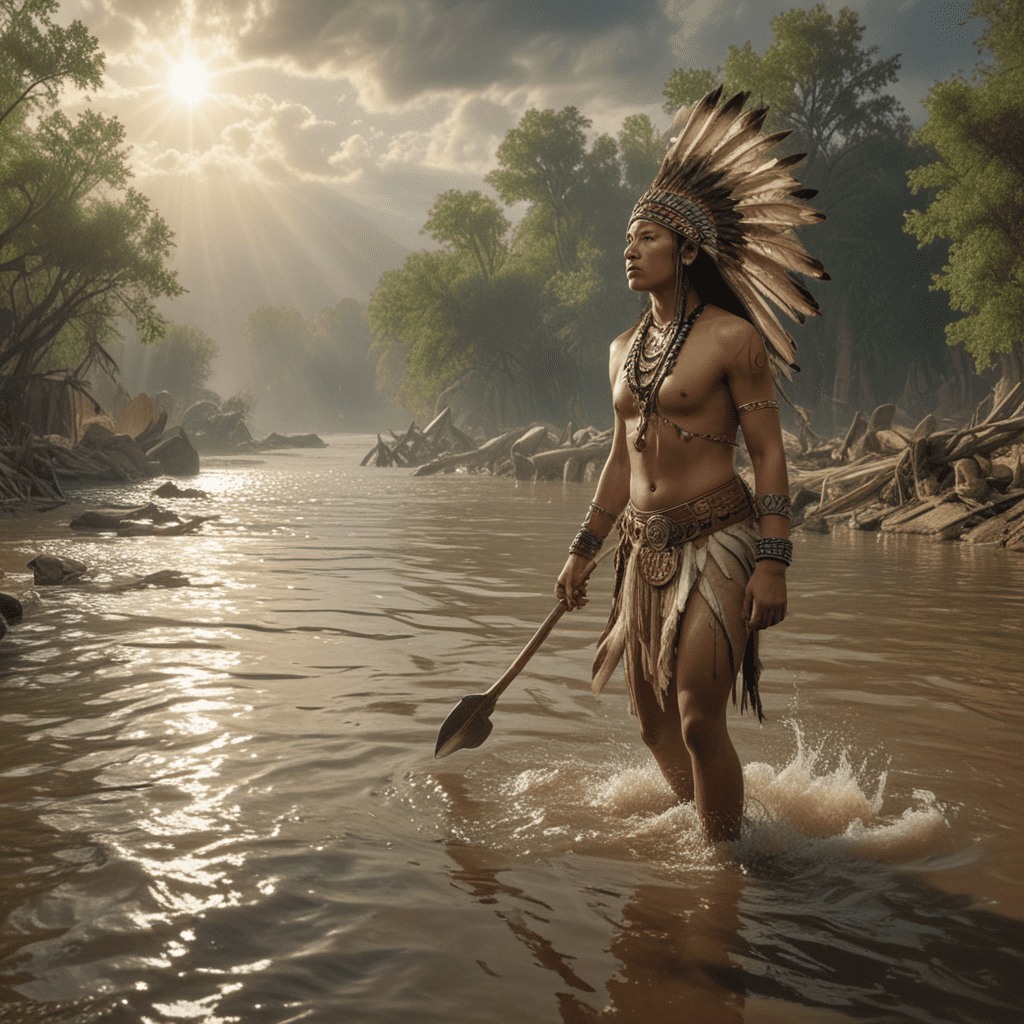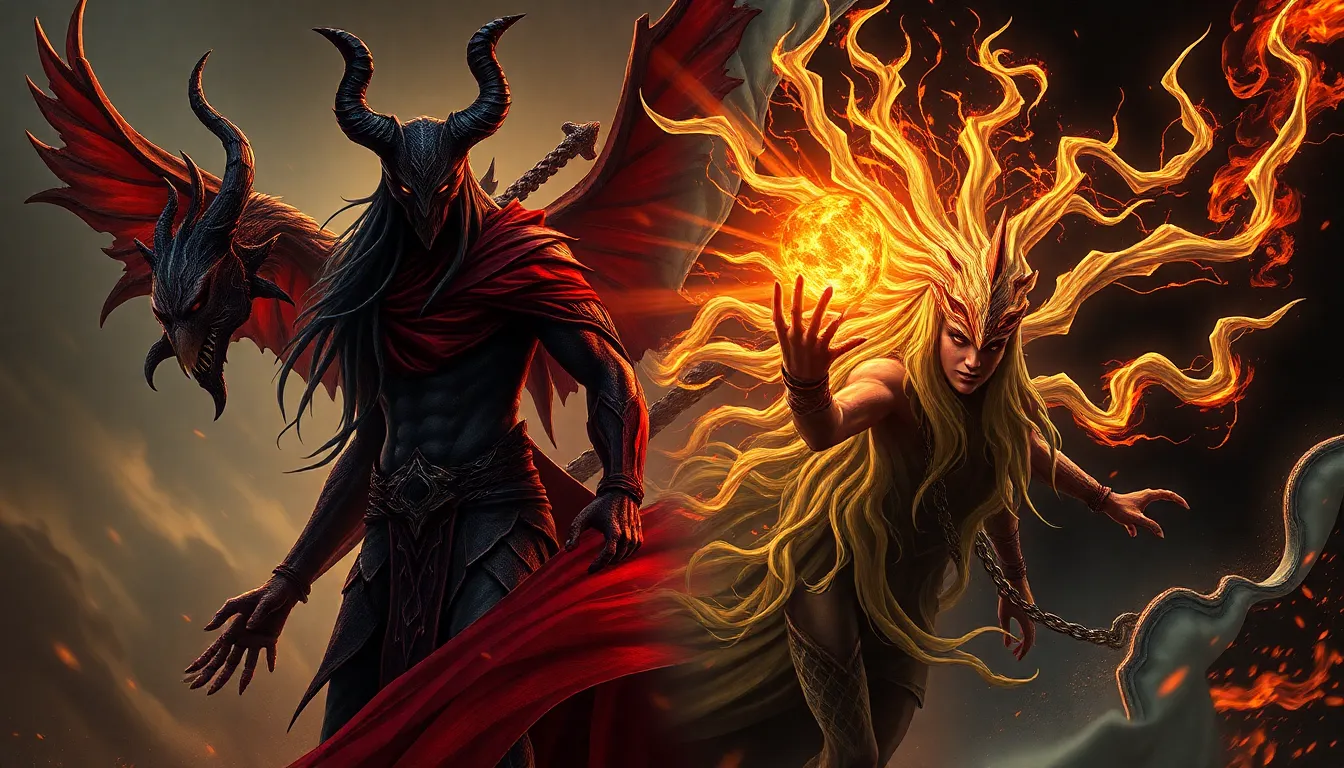The Legend of the Great Flood in Native American Mythology
Origins and Beliefs
The legend of the Great Flood holds a significant place in the oral traditions of many Native American cultures. Across tribes and regions, it is believed that a catastrophic flood wiped out most of the world's population in ancient times. This belief often serves as an origin story, explaining the creation of the present world and the emergence of humans. The Great Flood legend reinforces the connection between humanity and nature, emphasizing the power of the elements and the importance of respecting the sacredness of the environment.
Variations Across Native American Cultures
The Great Flood legend varies in details and symbolism across different Native American cultures. In some versions, the flood is caused by the anger of a sky deity or a mischievous water spirit. In others, it is a result of human misconduct or a natural disaster. The floodwaters are often described as a relentless force, rising to incredible heights and consuming everything in their path. However, amidst the devastation, there is always a story of survival and hope, as certain individuals or animals are chosen to repopulate the world.
The Cause of the Flood
The reasons for the Great Flood vary depending on the tribe telling the story. In some traditions, the flood is seen as a punishment for human transgressions, such as breaking sacred laws or disrespecting the environment. In other versions, it is a natural event, caused by excessive rain or the overflowing of a river. Some stories attribute the flood to the wrath of a supernatural being, angered by human behavior or the breaking of a taboo. Each variation reflects the unique beliefs and values of the particular Native American culture.
The Arrival of the Flood
The arrival of the Great Flood is often described as a sudden and overwhelming event. The waters rise rapidly, catching people off guard and forcing them to flee for their lives. In some versions, the flood is accompanied by thunder, lightning, and earthquakes, creating a chaotic and terrifying scene. As the waters continue to rise, people are forced to climb to higher ground or seek refuge in trees or on mountains. The relentless floodwaters consume everything in their path, drowning countless creatures and destroying the land.
The Survival of the People
Faced with the rising floodwaters, Native American legends tell of various ways in which people survived the Great Flood. In some stories, a single individual is chosen by a deity or spirit to be saved, often through a vision or dream. This individual is instructed to build a boat or gather animals to help them survive the flood. In other versions, entire families or communities work together to create rafts or find shelter on high ground. The survival of these individuals or groups symbolizes hope and resilience in the face of adversity.
The Aftermath of the Flood
As the floodwaters recede, the survivors emerge from their boats or shelters to find a drastically altered world. The landscape has been transformed, mountains and valleys have been formed, and many familiar landmarks have been wiped out. The survivors must now adapt to a new environment and rebuild their lives. This process is often accompanied by a sense of loss and displacement, but also a renewed appreciation for the fragility of life and the importance of community.
The Creation of the New World
In many Native American cultures, the Great Flood is seen as a transformative event that led to the creation of the present world. The floodwaters are believed to have washed away the impurities of the past, creating a clean slate for the emergence of a new and better world. The survivors are tasked with repopulating the earth and establishing new societies, guided by the lessons they have learned from the flood. The creation of the new world symbolizes rebirth, renewal, and the opportunity for a fresh start.
The Role of Animals
Animals play a significant role in many Great Flood legends. In some stories, animals are seen as messengers or helpers, providing guidance and assistance to the survivors. They may warn people of the impending flood or help them find shelter and food. In other versions, animals are symbols of strength, resilience, and the interconnectedness of all living beings. The presence of animals in these legends highlights the importance of respecting the natural world and living in harmony with other creatures.
The Significance of the Flood in Native American Culture
The Great Flood legend holds deep cultural and spiritual significance for many Native American tribes. It serves as a reminder of the power of nature and the importance of respecting the environment. The story also emphasizes the resilience and adaptability of human beings, as well as the importance of community and cooperation in times of crisis. The flood legend continues to be passed down through generations, shaping the beliefs and values of Native American cultures to this day.
Contemporary Interpretations
In contemporary times, the Great Flood legend continues to be interpreted in various ways. Some scholars see it as a metaphor for historical events or natural disasters. Others view it as a symbolic representation of the challenges and transformations that human societies have faced throughout history. The legend also finds resonance in environmental movements, as it highlights the consequences of human actions on the natural world. By understanding and reflecting on the Great Flood legend, we can gain insights into the past, present, and future of our relationship with the planet we inhabit.
FAQ
-
Q: What is the Great Flood legend in Native American mythology?
-
A: The Great Flood legend is a widespread belief among many Native American cultures that a catastrophic flood wiped out most of the world's population in ancient times.
-
Q: What are some of the variations in the Great Flood legend across different Native American cultures?
-
A: The legend varies in details and symbolism, including the cause of the flood, the survival of the people, and the aftermath of the flood. Some cultures see it as a punishment for human transgressions, while others view it as a natural event or the wrath of a supernatural being.
-
Q: What is the significance of the Great Flood legend in Native American culture?
-
A: The legend serves as a reminder of the power of nature and the importance of respecting the environment. It also emphasizes the resilience and adaptability of human beings and the importance of community and cooperation in times of crisis.
-
Q: How is the Great Flood legend interpreted in contemporary times?
-
A: The legend continues to be interpreted in various ways, including as a metaphor for historical events, natural disasters, or the challenges and transformations faced by human societies. It also finds resonance in environmental movements, highlighting the consequences of human actions on the natural world.



